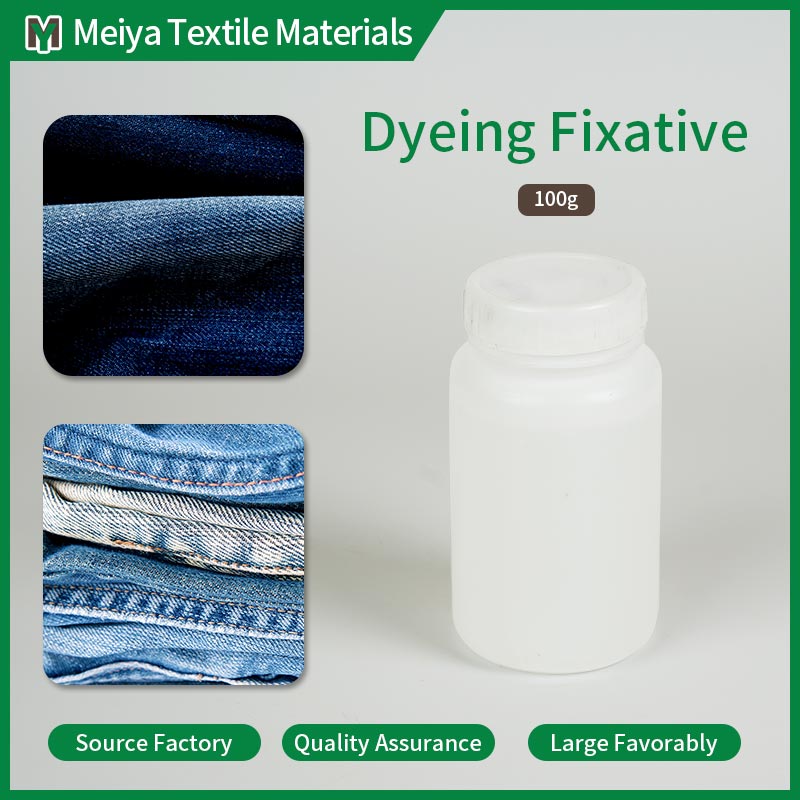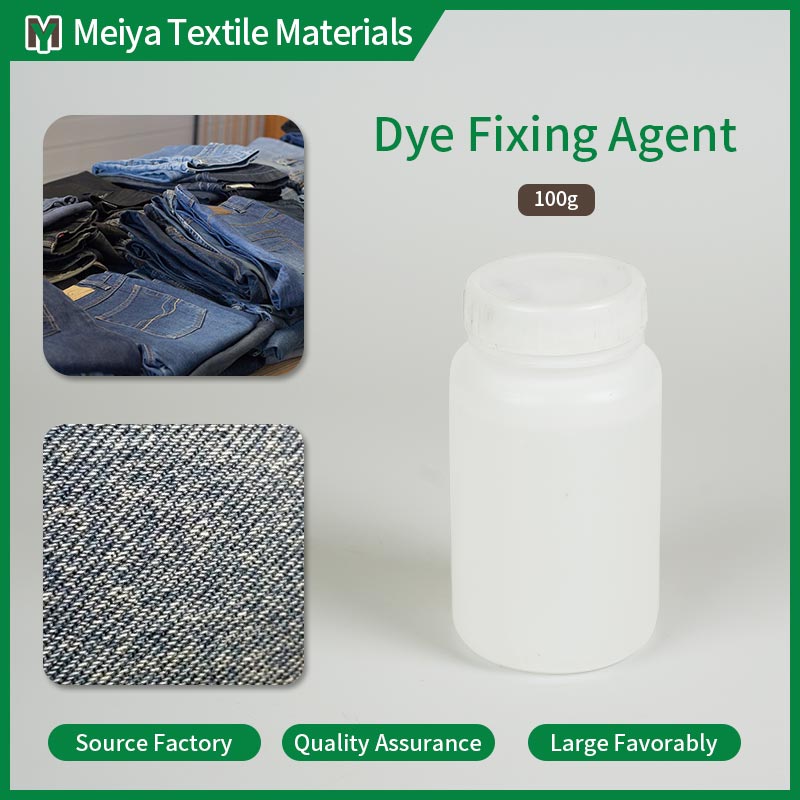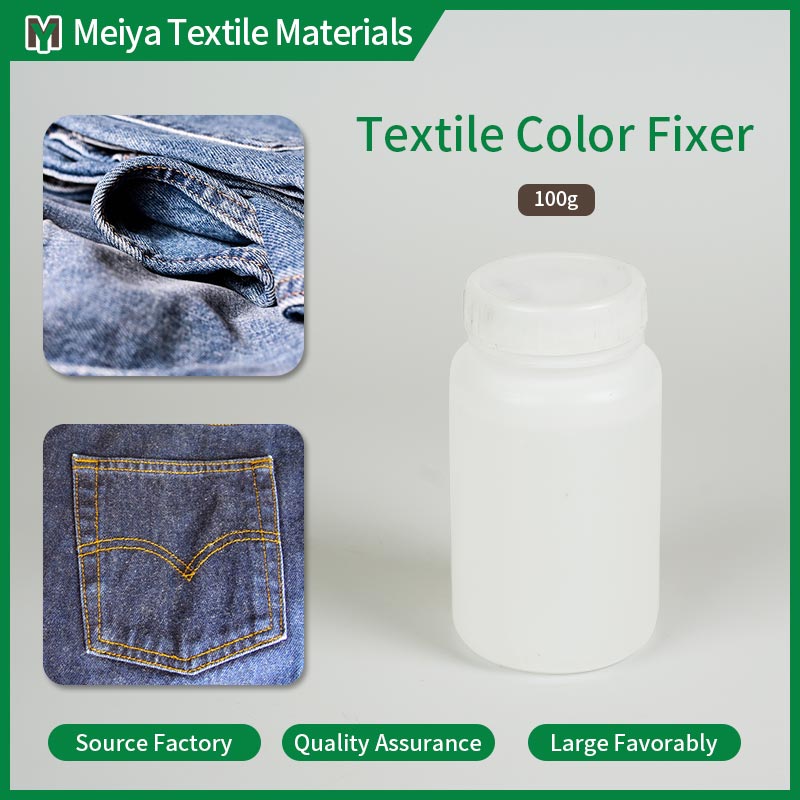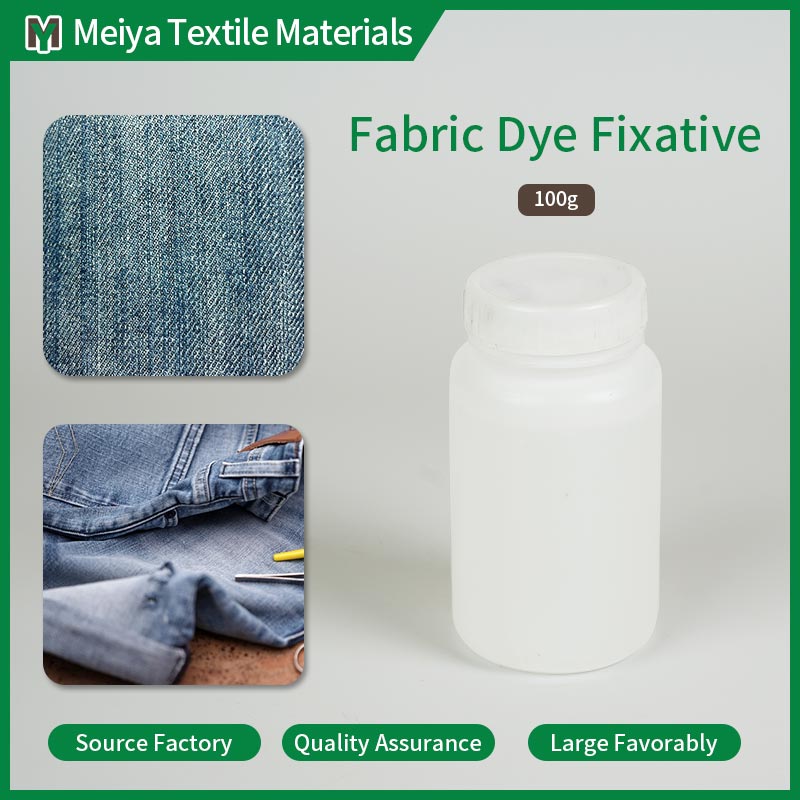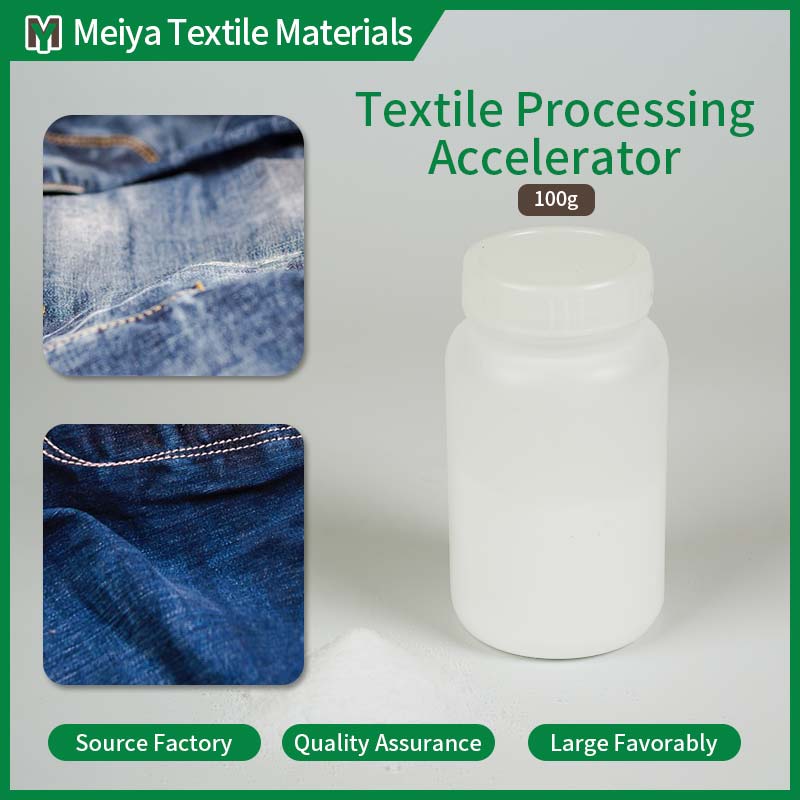Auxiliaries in Textile Dyeing
Please click the button below to contact us.
Introduction:Auxiliaries in Textile Dyeing can improve the dyeing process, dyeing effect and fabric quality, and play a vital role in the textile dyeing industry, covering all links from pretreatment, dyeing to finishing, helping to achieve uniform, bright and lasting dyeing effects.
Product Description
Auxiliaries in Textile Dyeing are chemical auxiliaries used in the textile dyeing process. Auxiliaries in Textile Dyeing can improve the dyeing process, dyeing effect and fabric quality, and play a vital role in the textile dyeing industry, covering all links from pretreatment, dyeing to finishing, helping to achieve uniform, bright and lasting dyeing effects.
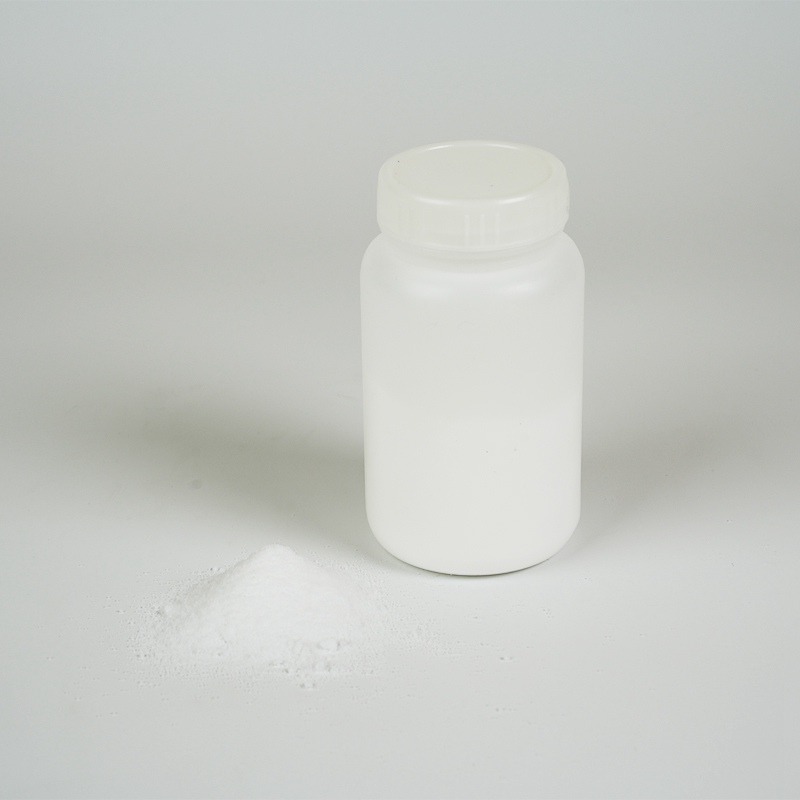
Auxiliaries in Textile Dyeing Features:
Efficient dyeing accelerator: Auxiliaries in Textile Dyeing has an efficient dyeing accelerator, which can significantly accelerate the dyeing speed of dyes on fibers. In a specific dyeing process, the dyeing time can be shortened by 30% - 50% after using this accelerator. For example, in the process of dyeing cotton fabrics with reactive dyes, it originally takes 60 minutes to reach a high dyeing rate. After adding an appropriate amount of accelerator, the dyeing time can be shortened to 30 - 42 minutes, and the dyeing rate can be increased by 5% - 10%. It is verified by professional dyeing rate test methods (such as spectrophotometry to determine the dye concentration in the residual liquid) to ensure that the dye is more fully combined with the fiber, improve dyeing efficiency, and reduce energy consumption.
Improve dyeing uniformity: It can effectively improve the uniformity of dyeing and reduce the occurrence of dyeing defects. During the dyeing process, the accelerator can make the dye disperse better in the dye bath, evenly adsorb on the fiber surface and diffuse into the fiber. According to actual production statistics, the color difference rate of dyed cloth can be reduced by 20% - 30% after using the accelerator. Through the detection of color measuring instruments (such as colorimeter), the color difference value (ΔE) of different parts of the cloth can be controlled within a smaller range, generally reaching ΔE≤1.5, meeting the requirements of high-quality dyeing products and making the color of dyed fabrics more uniform and consistent.
Enhanced color fastness: The accelerator helps to improve the color fastness of dyed fabrics, including color fastness to washing and color fastness to rubbing. In the color fastness to washing test (according to ISO 105 C06 standard), the color fastness grade of fabrics dyed with accelerator can be improved by 1-1.5 levels after 50 washes. In the color fastness to rubbing test (according to ISO 105 X12 standard), the dry rubbing color fastness can reach 4-5 levels, and the wet rubbing color fastness can reach 3-4 levels. Accelerators can promote the chemical bonding between dyes and fibers, form a more stable dyeing structure, reduce the shedding of dyes during washing and rubbing, and improve the quality and service life of dyed fabrics.
Good compatibility: textile processing accelerators have good compatibility with a variety of dyes and textile materials. In complex dyeing systems, it will not react adversely with dyes and other auxiliaries, ensuring the stability and consistency of the dyeing process. After a large number of laboratory tests and actual production verification, in dyeing systems containing multiple dyes such as reactive dyes, disperse dyes, direct dyes, and when used together with multiple auxiliaries such as leveling agents, fixing agents, and softeners, there will be no precipitation, stratification, discoloration, etc., ensuring the stability of the dyeing effect, and it is suitable for dyeing and processing of different types of fabrics.
Environmental protection and low pollution: It meets environmental protection requirements and has less harm to the environment and human body. Its chemical composition is biodegradable, and the degradation rate can reach more than 80% during wastewater treatment (tested within a certain time period). At the same time, the accelerator does not contain harmful heavy metals (such as lead, mercury, cadmium, etc., the content is lower than the detection limit, tested in accordance with relevant environmental protection standards) and organic chlorine carriers and other harmful substances, which reduces pollution to the environment and potential threats to the health of operators, and is in line with the current trend of sustainable development in the textile industry.
Strong stability: The accelerator has good stability under different storage conditions and use environments. In a storage environment with a temperature of 5-40℃ and a relative humidity of 30%-80%, its chemical properties and performance remain basically unchanged within 12 months. After accelerated stability testing (simulating storage and use under harsh conditions such as high temperature and high humidity), the active ingredient content of the accelerator changes by less than 5%, ensuring the consistency of the product's use effect in different regions and seasons, providing users with reliable use guarantees.
Where can we use Auxiliaries in Textile Dyeing:
Cotton textile dyeing enterprises: In cotton textile dyeing enterprises, Auxiliaries in Textile Dyeing can be used in the dyeing process of various cotton fabrics. Taking the dyeing of pure cotton shirt fabrics as an example, the use of accelerators can shorten the dyeing time, improve the dyeing rate and color fastness of the dye, and reduce energy consumption and wastewater discharge. According to actual production data statistics, in large cotton textile dyeing factories, after using this accelerator, the dyeing time per 10,000 meters of cotton fabric can be shortened by 10-15 hours, and the dye utilization rate can be increased by 5%-10%, which reduces production costs and improves product quality, meeting the market's dyeing requirements for high-quality cotton textiles.
Chemical fiber textile dyeing factories: For chemical fiber textile dyeing factories, such as the dyeing of chemical fiber fabrics such as polyester and nylon, accelerators can also play an important role. In the process of dyeing polyester fabrics with disperse dyes, accelerators can promote the dissolution and diffusion of disperse dyes, and improve the dyeing speed and dyeing rate. After production practice verification, after using accelerators, the dyeing depth (K/S value) of polyester fabrics can be increased by 10% - 15%, the color is brighter and fuller, and the color fastness is also significantly improved, which improves the dyeing quality and market competitiveness of chemical fiber textiles.
Wool textile dyeing industry: In the wool textile dyeing industry, accelerators can be used for dyeing wool fabrics such as wool and cashmere. Due to the special structure of wool fibers, the dyeing process is relatively complicated. After using accelerators, the dye can better penetrate into the wool fibers, improving the uniformity and color fastness of dyeing. For example, in the dyeing of wool sweaters, the use of accelerators can make the color of wool sweaters more uniform, reduce the occurrence of defects such as color flowers and spots, and at the same time, the color fastness to washing and the color fastness to rubbing can be improved by 1 - 1.5 levels, which improves the quality and grade of wool textile products.
Silk dyeing processing: In silk dyeing processing, textile processing accelerators help to improve the color brightness and color fastness of silk fabrics. Silk fibers have strong adsorption and binding capabilities for dyes, but problems such as color flowers are prone to occur during the dyeing process. After using the accelerator, the dye can be more evenly distributed on the silk fiber, making the dyed silk color more vivid and bright. At the same time, the color fastness is significantly improved. In the color fastness tests such as sweat resistance and water resistance, the grade can be increased by 1-1.5 grades (tested in accordance with relevant standards), which meets the high quality requirements of silk products and enhances the market value of silk products.
Printing and dyeing concentrated industrial park: The printing and dyeing concentrated industrial park gathers many printing and dyeing enterprises, which have high requirements for dyeing efficiency and product quality. Textile processing accelerators can be widely used in the park to improve the dyeing production efficiency of the entire park. By uniformly using accelerators, enterprises in the park can share technological achievements, reduce production costs, and improve product quality stability. According to the park's statistical data, after using accelerators, the overall dyeing production efficiency of the park has increased by 15%-20%, and the product defect rate has decreased by 10%-15%, enhancing the park's competitiveness in the market.
Customized textile dyeing: In the field of customized textile dyeing, such as high-end clothing customization, personalized home textile customization, etc., the consistency and accuracy of dyeing colors are extremely high. Textile processing accelerators can help achieve more precise dyeing control, ensuring that the color of each dyeing is highly consistent with the sample color. Through the use of professional color management systems and accelerators, the color matching degree of customized textiles can reach more than 95%, meeting customers' needs for personalized, high-quality dyeing products and improving customer satisfaction with customized textiles.
Auxiliaries in Textile Dyeing Maintenance:
Sealed storage: Textile treatment accelerators should be stored in a sealed container to avoid contact with air. During storage, ensure that the container is well sealed to prevent the accelerator from volatilizing and oxidizing. If the container is not tightly sealed, the active ingredients of the accelerator may be reduced due to volatilization, affecting the use effect. Generally speaking, accelerators should be stored in the original container with the lid tightly closed in a cool, dry, ventilated place, avoiding direct sunlight and high temperature environment.
Avoid high temperature and direct sunlight: The storage environment should avoid high temperature and direct sunlight. High temperature and ultraviolet rays in sunlight may accelerate the chemical decomposition of the accelerator and reduce its performance. The ideal storage temperature is 5-40℃ and the relative humidity is 30%-80%. If the accelerator is exposed to high temperature for a long time (such as more than 50℃), the degradation rate of its active ingredients will be significantly accelerated, which may cause the accelerator to fail to achieve the expected effect when used.
Prevent impurities: During use and storage, prevent the accelerator from being mixed with impurities. Impurities may affect the chemical properties of the accelerator and the reaction effect with the dye. When taking the accelerator, clean tools should be used to avoid bringing dust, fiber and other impurities into the container. If impurities are mixed into the accelerator, quality problems such as stains and color difference may occur during the dyeing process, affecting the dyeing effect.
Regular inspection: Regularly check the storage status of the accelerator, including appearance, odor, etc. If the accelerator is found to have abnormal conditions such as discoloration, precipitation, odor, etc., it should be stopped and the supplier should be contacted for consultation and treatment. Regular inspection can timely discover possible problems that may occur during the storage of the accelerator to avoid the use of deteriorated accelerators to cause adverse effects on dyeing.
Use according to the prescribed dosage: When using textile processing accelerators, strictly follow the prescribed dosage and usage methods. Excessive use may cause abnormal dyeing effects, such as color difference, poor feel, etc.; insufficient dosage may not achieve the expected acceleration and dyeing effects. Before use, the product manual should be carefully read to understand the scope of application, dosage requirements and other information, and adjust according to the actual production situation.
Waste disposal: Expired or discarded textile processing accelerators should be properly disposed of in accordance with environmental protection requirements. Do not dump it at will to avoid environmental pollution. The discarded accelerator can be handed over to a professional waste disposal agency for disposal, or it can be harmlessly disposed of in accordance with relevant environmental protection laws and regulations to ensure that its impact on the environment and human body is minimized.
Auxiliaries in Textile Dyeing FAQs:
1. What is the impact of the Auxiliaries in Textile Dyeing on the efficiency of production?
Our Auxiliaries in Textile Dyeing broaden the scope of possibilities by cutting down on time needed for majority of critical operations, such as dyeing, bleaching and pre-treatment. These attributes translate to remarkable time savers, higher production volume, as well as enhanced production efficiency.
2. Do you think that your Auxiliaries in Textile Dyeing are suitable for treating any types of fabrics?
Yes. Our Auxiliaries in Textile Dyeing are extremely adaptable and can be used on a variety of fabrics which includes natural fibers such as cotton, wool and linen as well as synthetic fume such as polyester and nylon. It does not matter if one is working with very sensitive fabrics that are difficult to manage or very tough fabrics that require heavy treatment, the accelerator can be adjusted to the required processing conditions to guarantee high quality in various textiles.
3. Can the accelerator help reduce environmental impact during textile processing?
Yes for sure. Goal of the Auxiliaries in Textile Dyeing is: sustainability being the most important. It reduces processing times and chemical consumption which in turn reduces water and energy consumption. This not only helps lower the operational carbon emissions in your business practice but also fosters an environmentally friendly production process. The accelerator participates in promoting faster reactions so there is less need for heat or water.
4. What kind of cost savings can we expect when using your Auxiliaries in Textile Dyeing?
Using our Auxiliaries in Textile Dyeing allows cost cutting on a dramatic scale. Significant areas of savings have been identified such as energy savings, Processing time savings, and savings on Chemicals. Cycle times have been reduced so that your facility can process more batches in a given time period which increases throughput.
5. How should I incorporate your Auxiliaries in Textile Dyeing into my manufacturing environment?
Our Auxiliaries in Textile Dyeing are specifically designed to be added to an existing production line. For every stage of the process, be it dyeing, bleaching or finishing, you get detailed instructions and support to make sure that the implementation is done without a hitch.

